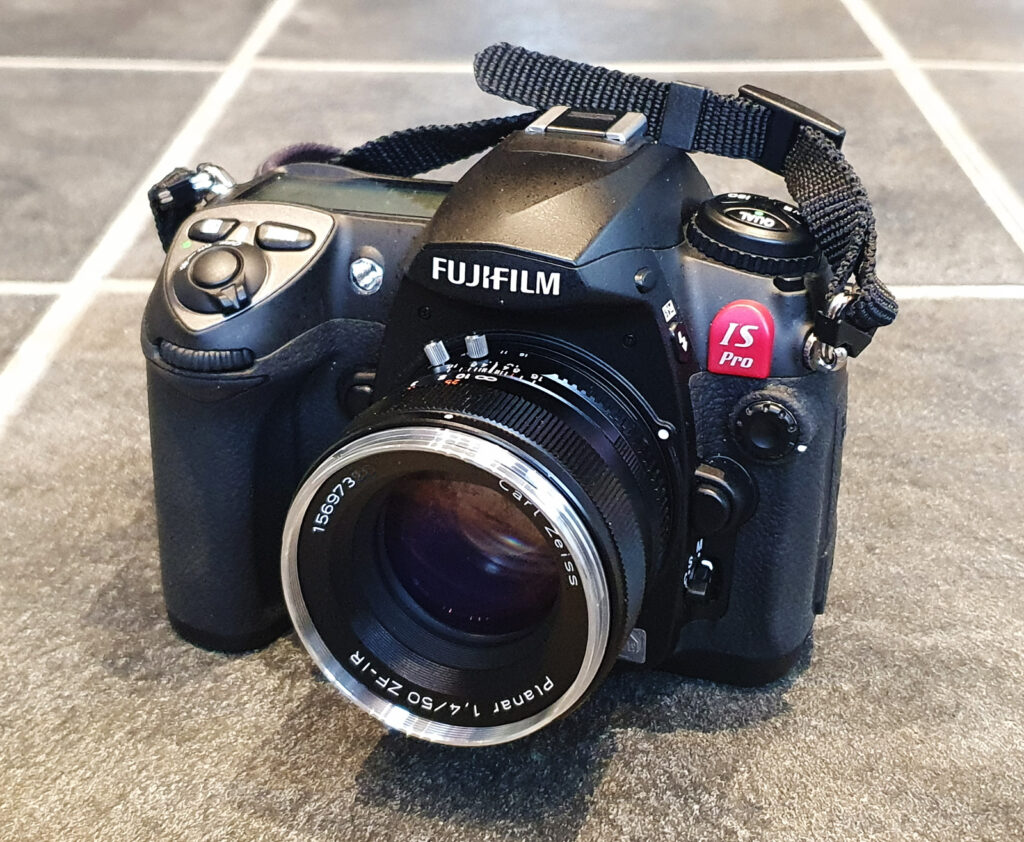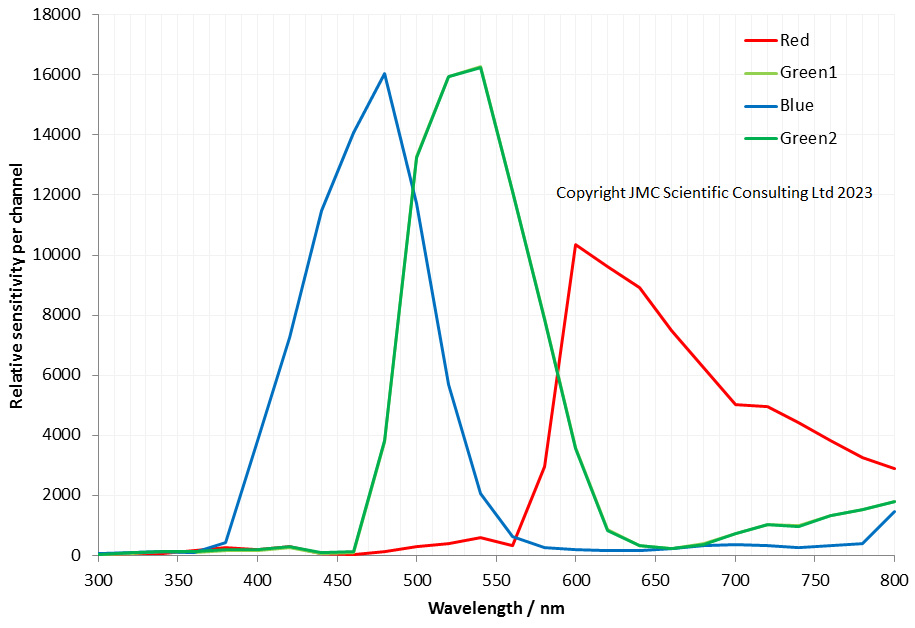The Fuji IS Pro camera (or to give it its full name the Fujifilm Finepix IS Pro) was a DSLR introduced back in 2007. Based on their S5 camera body (which was based on a Nikon D200) this was advertised as being able to image in the UV, visible and IR and as such was not really aimed at the consumer market but more at the scientific and forensics areas. Indeed it didn’t go on general release and Fuji required buyers to sign a release form saying they weren’t going to use it for ‘unethical purposes’. It followed on from their S3 Pro UVIR version, but even from the beginning it was apparent that all was not well with the IS Pro and its UV sensitivity especially was not that great. I recently got hold of one these cameras and thought it would be fun to measure its spectral response as I have done with my other cameras.
Before we begin with the technical stuff, here’s the camera with a Zeiss ZF-IR 50mm f1.4 lens attached.

Handling it, I like the feel of it. It feels well made and nice and solid. It takes compact flash cards, and has an APS-C sized sensor. Speaking of the sensor, this was a quirky design. A 12.3 megapixel ‘Super CCD’ with two different types of pixels – 6.17 million S-pixels and 6.17 million R-pixels for enhanced dynamic range. The degree to which these are used together can be selected by the user from the menu on the back. Although not a huge resolution, the sensor (when used in the S5) was well regarded by photographers especially with regards to the skin tones it was able to produce.
What’s the spectral response like? Here’s the results of my measurements.

First thing to notice is this is barely UV sensitive, and only at the top end of the UV range from about 370-400nm. Below that sensitivity is essentially zero. The sensitivity it has is also mainly in the blue channel. This is different to the Sony, Nikon and Canon cameras I have looked at which have a little more sensitivity in the red and green channels in the UV, and a little more reach at the short wavelength end (for example see here for my Sony A7III data). While the IS pro could be used for imaging in that 370-400nm region, it is not really a UV camera. At the IR end things are better, and it is behaving here as expected for the other cameras which have been converted for multispectral imaging, although with a bit more emphasis on the red channel vs the blue and green channels in the 650nm to 780nm region.
However the really interesting area for the Fuji is how it splits blue, green and red. If you look at the Sony A7III for example, the red channel shows some significant response in the green and even blue wavelengths. Likewise the green channel spreads well into the blue and red channel regions. The Fuji IS Pro has very clean colour channels – while the overlap at their edges they do not spread over wide wavelength ranges, and the red does not bleed across the blue for example. This might account for its ability to capture skin tones accurately. I can also imagine it would be good at blue subjects – the Bluebell test, for example.
This IS Pro cannot be used simply like a normal colour camera given its IR (and the a lesser extent UV) sensitivity. However by using a filter such as BG38 on the front of the lens could be used for normal colour imaging, although the images would probably need to be carefully white balanced to get the best from them. I have also heard that IR photographers like it for the images it produces, so this is something I will try out.
Over the years, camera manufacturers have played around with different sensor technologies and each have their own little quirks and subtleties with regards to how they capture colours. Taking a look at the Fuji IS Pro has certainly been interesting, end despite its relatively low resolution compared with today’s offerings I can imagine it would still earn a spot in the camera bag for certain subjects. As always, if you’ve made it this far I thank you for your time, and if you’d like to know more about any aspect of my work I can be reached here.
